Hours of Operation:
Monday-Friday
7:30am to 4:30pm
Armour Safety Inc. is Saskatchewan's largest local Indigenous owned safety firm, based in Regina.
We are a team that works hard and delivers a full complement of safety consulting, testing, training, medical standby, rescue standby, and safety supervision services.
We are an established occupational health and safety firm that has served Regina and area for decades.
We are currently looking for amazing individuals to join our team.
Below are the open positions and resumes can be sent to [email protected].
We look forward to hearing from you!
Occupational Tester (Part time, great for a University student)


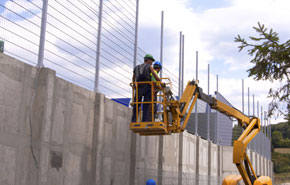
Effective June 1, 2022, all credit card payments for both businesses and individuals will be processed the day prior to class. Cancellation must be given 24hrs prior to class time to avoid this charge. No refunds will be issued for late removals. Thank you.
 Elevated Work Platforms are commonly used in construction, inspection, and repair services to lift employees to an elevated work position. Proper operation and use of this equipment can make completion of tasks at elevation safer and more efficient. Using elevated work platforms outside of the manufacturer’s recommended parameters or exceeding the limit capacities will result in equipment failure that could have fatal results. Knowing and understanding the equipment limitations, operating characteristics and maintenance and inspection requirements of elevated work platforms will significantly reduce the risk of any accidental injury or personal damage associated with this type of equipment.
Elevated Work Platforms are commonly used in construction, inspection, and repair services to lift employees to an elevated work position. Proper operation and use of this equipment can make completion of tasks at elevation safer and more efficient. Using elevated work platforms outside of the manufacturer’s recommended parameters or exceeding the limit capacities will result in equipment failure that could have fatal results. Knowing and understanding the equipment limitations, operating characteristics and maintenance and inspection requirements of elevated work platforms will significantly reduce the risk of any accidental injury or personal damage associated with this type of equipment.
This training is a combination of classroom instruction and practical experience. The instruction portion covers all pertinent aspects of Table 14.1 of the Saskatchewan OH&S regulations. As of 2007, Saskatchewan OH&S legislation requires anyone who operates powered mobile equipment to have a minimum of 16 hours training.
Key Elements:
A variety of teaching strategies are used to facilitate learning including discussion, guides/manuals, PowerPoint, and equipment specific practical training. At the conclusion of each course participants may receive a certificate of completion provided the employer can give credit for past experience.
Course Length: 8 hours. A minimum of 8 hours of previous practical equipment specific experience is required in order to receive certification at the completion of the course.
Pre Requisites: Fall Protection End User training (Must be Armour Safety; Energy Safety Canada approved; or as approved by Armour Safety).
Outcomes: Upon successful completion of the theory and practical components (16 hours classroom and practical training combined) each participant will receive a certificate that is valid for three years. Course participants will be able to apply the knowledge and skills learned.
Additional Notes:
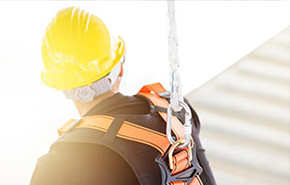
Effective June 1, 2022, all credit card payments for both businesses and individuals will be processed the day prior to class. Cancellation must be given 24hrs prior to class time to avoid this charge. No refunds will be issued for late removals. Thank you.
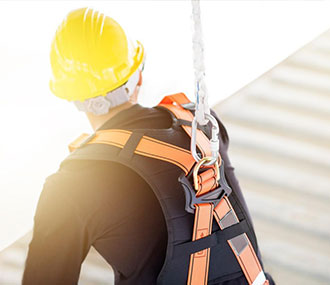 A Fall Protection certificate is required by anyone working at heights as defined in the Saskatchewan OH&S Regulations. This course is designed to help workers understand the principles of fall protection and how they apply to the workplace. The program will meet or exceed applicable government regulations for the training of employees who work at heights.
A Fall Protection certificate is required by anyone working at heights as defined in the Saskatchewan OH&S Regulations. This course is designed to help workers understand the principles of fall protection and how they apply to the workplace. The program will meet or exceed applicable government regulations for the training of employees who work at heights.
Key Elements
In this course a variety of teaching strategies are used to facilitate learning including discussion, guides/manuals, PowerPoint, videos and hands on activities with fall protection equipment such as donning a harness and equipment inspection.
COURSE LENGTH: 7-8 Hours
PRE REQUISITES: None
OUTCOMES: Upon successful completion of this course (minimum score of 75%) each participant will receive a certificate that is valid for three years. Course participants will be able to apply the knowledge and skills learned.
ADDITIONAL NOTES:
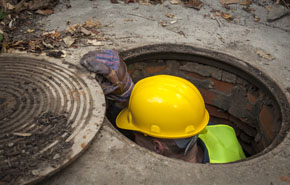
Effective June 1, 2022, all credit card payments for both businesses and individuals will be processed the day prior to class. Cancellation must be given 24hrs prior to class time to avoid this charge. No refunds will be issued for late removals. Thank you.
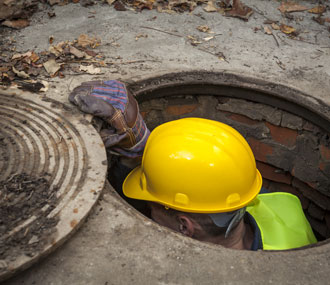 TARGET AUDIENCE - A Confined Space certificate is required by anyone entering a confined space as defined in the Occupational Health & Safety Regulation
TARGET AUDIENCE - A Confined Space certificate is required by anyone entering a confined space as defined in the Occupational Health & Safety Regulation
DURATION - 7-8 hours
CONTENT - Understand the OH&S regulations as they pertain to confined spaces; How to recognize and mark confined spaces; Identify and control confined space hazards; Identify required personal protective equipment; Become familiar with industry accepted standards and regional codes of practice; Learn how to plan a successful entry; Learn how to plan a successful
rescue; Practical entry component.
METHODS - In this course a variety of teaching strategies are used to facilitate learning, including discussion guides/manuals, PowerPoint, video and emergency breathing equipment. Entry into a simulated confined space may be included for those requiring a rescue component to their training. At the conclusion of each course participants will be able to apply the knowledge and skills learned.
PREREQUISITES - None
OPEN TO - Public and company groups

Effective June 1, 2022, all credit card payments for both businesses and individuals will be processed the day prior to class. Cancellation must be given 24hrs prior to class time to avoid this charge. No refunds will be issued for late removals. Thank you.
 Global Ground Disturbance Level II® is designed for any party that is supervising a ground disturbance, independently performing a ground disturbance, or issuing and receiving ground disturbance permits. The program ensures that Level II® personnel are familiar with, and fully understand, all the regulations (Sk, & AB.) and variances involved when a ground disturbance takes place.
Global Ground Disturbance Level II® is designed for any party that is supervising a ground disturbance, independently performing a ground disturbance, or issuing and receiving ground disturbance permits. The program ensures that Level II® personnel are familiar with, and fully understand, all the regulations (Sk, & AB.) and variances involved when a ground disturbance takes place.
The course is presented in a logical sequence – from the pre-planning stage to the actual dig – and highlights the “‘musts” compared to the “shoulds”. Level II® is the standardized program recognized by industry regulators. Participants learn how to clarify sources when searching for underground facilities, provide notification to the facility owner and receive owner notification.
Participants gain an understanding of the necessary approvals/crossing agreements and regulations necessary before creating a ground disturbance. They learn to create a plot plan/site drawing, gain an understanding of line locating and learn about types of exposure. Participants will also learn how to do a back-fill inspection, as well as how to use permits and conduct pre-job meetings. Emergency response plans and what to do in case an underground facility is contacted are also covered.
Objectives are tested by written competency exam. Certification, valid for three years, is issued upon completion of objectives. This course is assessed to the ABCGA Standard 201 Ground Disturbance - Supervisory.
Course Length: 8 Hours
Pre Requisites: None
Outcomes: Upon successful completion of this course (minimum score of 80%) each participant will receive a certificate that is valid for three years. Course participants will be able to apply the knowledge and skills learned.
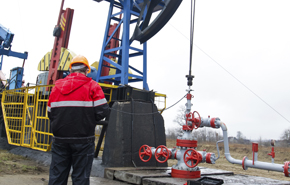
Effective June 1, 2022, all credit card payments for both businesses and individuals will be processed the day prior to class. Cancellation must be given 24hrs prior to class time to avoid this charge. No refunds will be issued for late removals. Thank you.
 This course is required by oilfield companies and is intended for all workers in the petroleum industry who could be exposed to hydrogen sulphide (H2S). The primary focus is to help people work safely in and around H2S environments. This course covers the physical properties and health hazards of H2S, how to protect oneself and basic rescue techniques. Each participant is required to operate a self-contained breathing apparatus and perform rescue lift and drag exercises. Legislated requirements under Saskatchewan OH&S regulations are met.
This course is required by oilfield companies and is intended for all workers in the petroleum industry who could be exposed to hydrogen sulphide (H2S). The primary focus is to help people work safely in and around H2S environments. This course covers the physical properties and health hazards of H2S, how to protect oneself and basic rescue techniques. Each participant is required to operate a self-contained breathing apparatus and perform rescue lift and drag exercises. Legislated requirements under Saskatchewan OH&S regulations are met.
Key Elements:
A variety of strategies are used to facilitate learning including discussion, guides/manuals, PowerPoints, group projects, and practical exercise including rescue drags, air monitor usage, and donning/doffing of SCBAs.
Course Length: 7-8 Hours
Pre Requisites: None
Outcomes: Upon successful completion of this course (minimum score of 70%) each participant will receive a certificate that is valid for three years. Course participants will be able to apply the knowledge and skills learned.
Additional Notes:
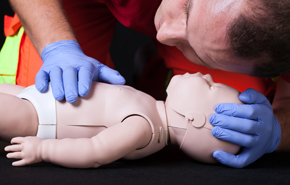
Effective June 1, 2022, all credit card payments for both businesses and individuals will be processed the day prior to class. Cancellation must be given 24hrs prior to class time to avoid this charge. No refunds will be issued for late removals. Thank you.
 This course is a comprehensive two-day course offering first aid and cardiopulmonary resuscitation (CPR) skills for those who need training due to work requirements or who want more knowledge to respond to emergencies at home. It includes the latest first aid and CPR guidelines and meets Saskatchewan OH&S regulations for Standard First Aid and CPR.
This course is a comprehensive two-day course offering first aid and cardiopulmonary resuscitation (CPR) skills for those who need training due to work requirements or who want more knowledge to respond to emergencies at home. It includes the latest first aid and CPR guidelines and meets Saskatchewan OH&S regulations for Standard First Aid and CPR.
Key Elements:
A variety of teaching strategies are used to facilitate learning including discussion, guides/manuals, PowerPoint, and videos. Additionally, hands-on components are supported by a variety of training materials, based on course requirements, such as: mannequins for practicing CPR, AED trainers, bandages, splinting materials, barrier devices, first aid kits, auto-injector trainers, inhalers etc. At the conclusion of each course participants will be able to apply the knowledge and skills learned.
Course Length: 18 Hours
Pre Requisites: None
Outcomes: Upon successful completion of this course (minimum score of 75%, along with 100% attendance and skills demonstration) each participant will receive a certificate that is valid for three years. Certification in Standard First Aid, CPR Level A, C, or HCP, and AED is available
Additional Notes:
Recertification: A student can recertify their First Aid/CPR with AED certification in a 6-8 hour course as long as their current certification has not expired.
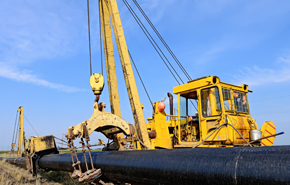
Effective June 1, 2022, all credit card payments for both businesses and individuals will be processed the day prior to class. Cancellation must be given 24hrs prior to class time to avoid this charge. No refunds will be issued for late removals. Thank you.
 Pipeline Construction Safety Training (PCST) is designed to help the pipeline worker know how to respond to worksite health and safety issues by taking the worker through the entire pipeline construction process from beginning to end. This course provides workers with tools to help them recognize, assess, and control hazards, operate a vehicle safely, operate equipment safely, and emergency response.
Pipeline Construction Safety Training (PCST) is designed to help the pipeline worker know how to respond to worksite health and safety issues by taking the worker through the entire pipeline construction process from beginning to end. This course provides workers with tools to help them recognize, assess, and control hazards, operate a vehicle safely, operate equipment safely, and emergency response.
Key Elements:
PCST was created for pipeline workers to enhance their health and safety awareness and to help prevent injuries to workers. The Construction Sector Council has worked with pipeline construction workers, contractors and safety experts across Canada to develop this 13-lesson interactive training course that will give students greater awareness about pipeline construction safety.
Course Length: 6 Hours.
Pre Requisites: None
Outcomes: A final mark of 100% is required in order to receive a certificate of completion. There is a printable certificate that you can print once you successfully complete the course and exam. Course participants will be able to apply the knowledge and skills learned.
Additional Notes:
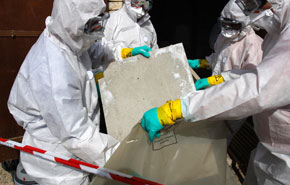
Effective June 1, 2022, all credit card payments for both businesses and individuals will be processed the day prior to class. Cancellation must be given 24hrs prior to class time to avoid this charge. No refunds will be issued for late removals. Thank you.
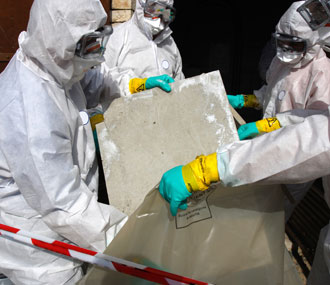 This course is mainly for two groups: employers whose operations may require workers to handle or work in an environment with asbestos or asbestos-containing materials; and workers who work with asbestos removing and cleaning up asbestos waste materials or, very occasionally, installing asbestos. This program will meet or exceed applicable government regulations for the training of employees working with Asbestos.
This course is mainly for two groups: employers whose operations may require workers to handle or work in an environment with asbestos or asbestos-containing materials; and workers who work with asbestos removing and cleaning up asbestos waste materials or, very occasionally, installing asbestos. This program will meet or exceed applicable government regulations for the training of employees working with Asbestos.
Key Elements:
A variety of teaching strategies are used to facilitate learning including discussion, guides/manuals, PowerPoint, videos and worksheets.
Course Length: 3-4 Hours
Pre Requisites: None
Outcomes: Upon successful completion of this course (minimum score of 75%) each participant will receive a certificate that is valid for three years. Course participants will be able to apply the knowledge and skills learned.
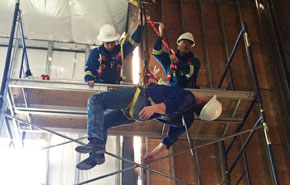
Effective June 1, 2022, all credit card payments for both businesses and individuals will be processed the day prior to class. Cancellation must be given 24hrs prior to class time to avoid this charge. No refunds will be issued for late removals. Thank you.
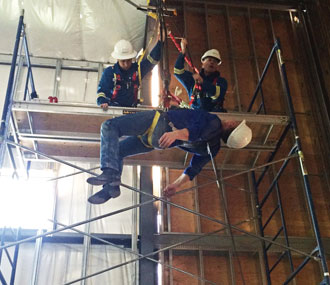 This program will meet or exceed applicable government regulations for the training of employees rescuing at heights. Canadian legislation requires that every fall protection plan include a rescue plan. This course will teach workers that proper strategies and hazard assessments are necessary to safely and efficiently perform rescues using company specific C.S.A. approved rescue gear.
This program will meet or exceed applicable government regulations for the training of employees rescuing at heights. Canadian legislation requires that every fall protection plan include a rescue plan. This course will teach workers that proper strategies and hazard assessments are necessary to safely and efficiently perform rescues using company specific C.S.A. approved rescue gear.
Key Elements:
A variety of teaching strategies are used to facilitate learning including discussion, guides/manuals, PowerPoint, equipment demonstrations, and performance based exercises. Trainees are required to complete practical testing in order to receive course certification.
Course Length: 7-8 Hours
Pre Requisites: Fall Protection End User training (Must be Armour Safety; Energy Safety Canada approved; or as approved by Armour Safety)
Outcomes: Each participant will receive a certificate for this course valid for three years upon successful completion of all practical exercises. Course participants will be able to apply the knowledge and skills learned.
Additional Notes:
Have you called to register? If not please call our office at (306) 352-8805. If you have already registered please continue with the online training.
Continue Close